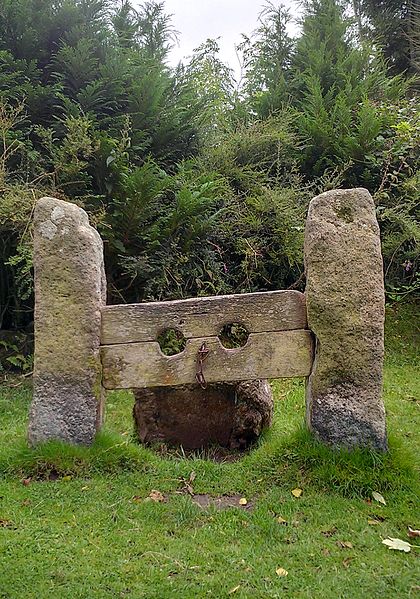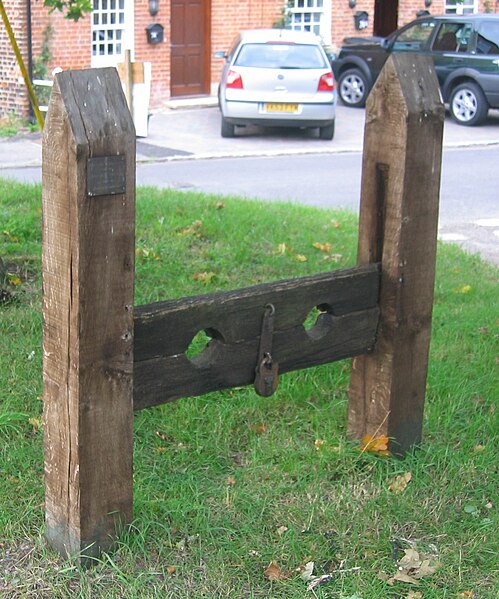A village lock-up is a historic building once used for the temporary detention of people in England and Wales, mostly where official prisons or criminal courts were beyond easy walking distance. Lockups were often used for the confinement of drunks, who were usually released the next day, or to hold people being brought before the local magistrate. The archetypal form comprises a small room with a single door and a narrow slit window, grating or holes. Most lock-ups feature a tiled or stone-built dome or spire as a roof and are built from brick, stone and/or timber.
Lock-up in Breedon on the Hill, Leicestershire
Interior cell of lock-up in Lacock, Wiltshire
Lock-up in Hilperton, Wiltshire
"The Blind House", Box, Wiltshire
Stocks are feet restraining devices that were used as a form of corporal punishment and public humiliation. The use of stocks is seen as early as Ancient Greece, where they are described as being in use in Solon's law code. The law describing its use is cited by the orator Lysias: "'He shall have his or her foot confined in the stocks for five days, if the court shall make such addition to the sentence.' The 'stocks' there mentioned, Theomnestus, are what we now call 'confinement in the wood'".
Village stocks in Bramhall, England.
The south prospect of the High Cross in Bristol (1728)
The Stocks at Belstone in Dartmoor, a Grade II listed monument.
Stocks in Keevil, Wiltshire.








